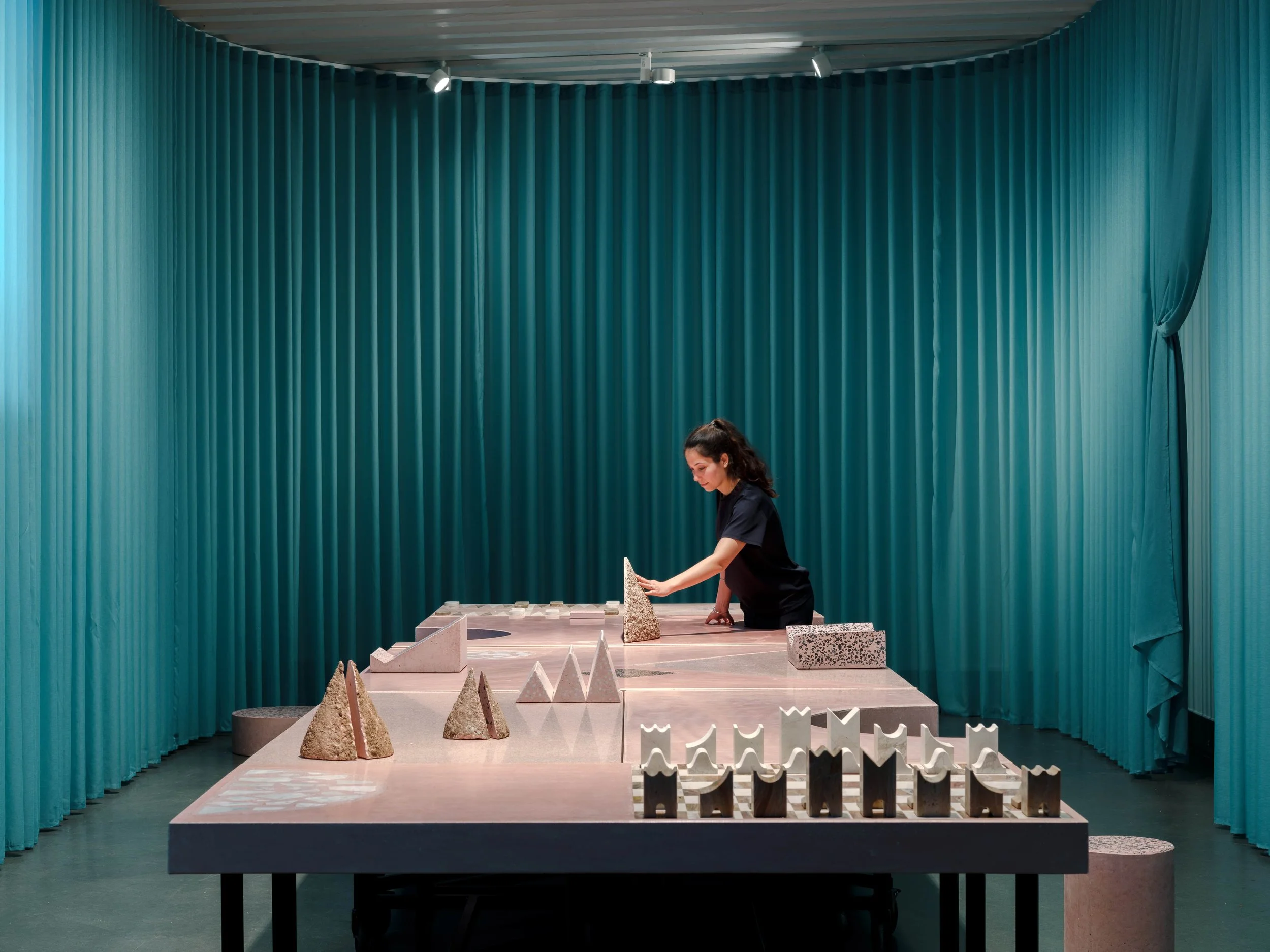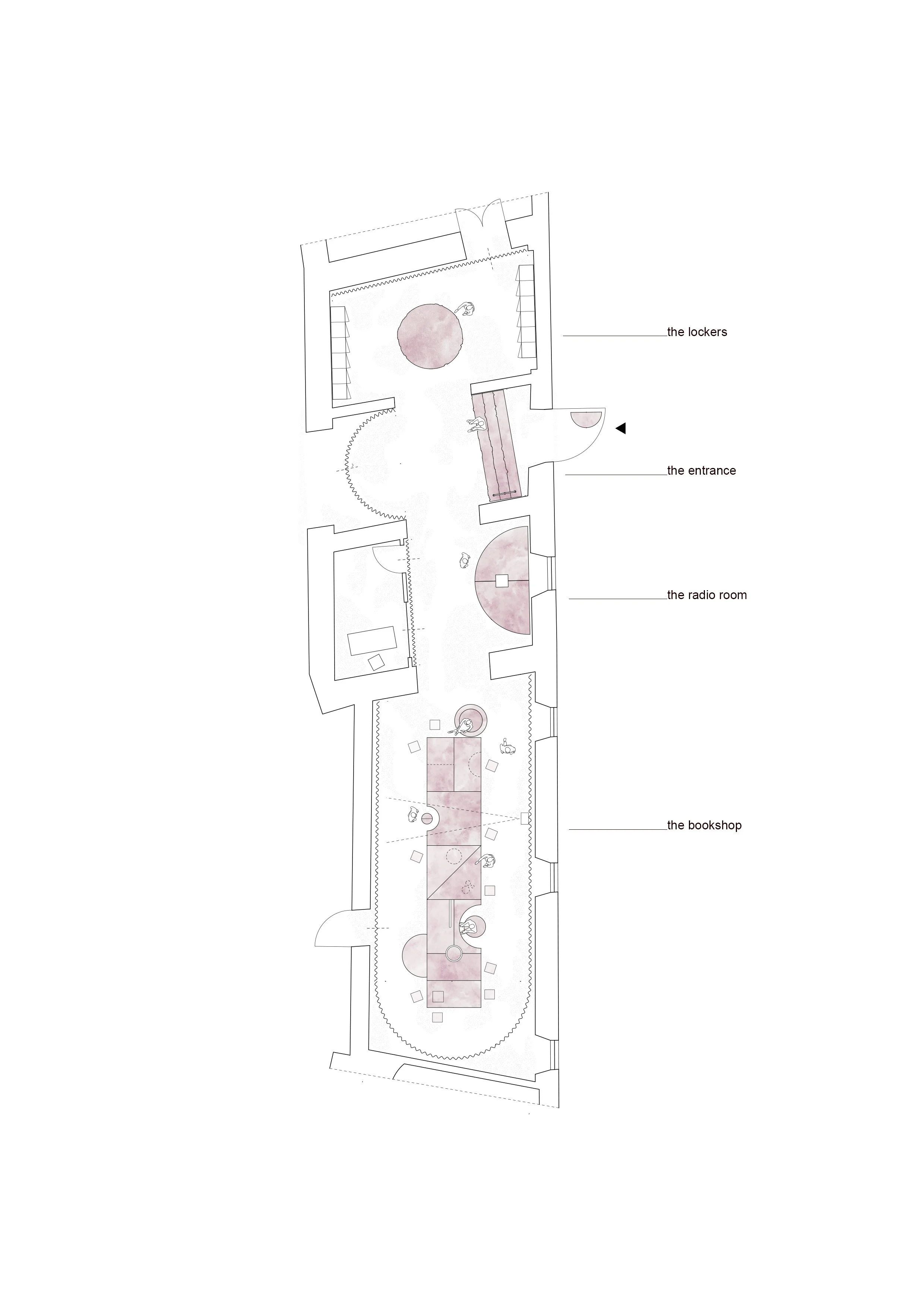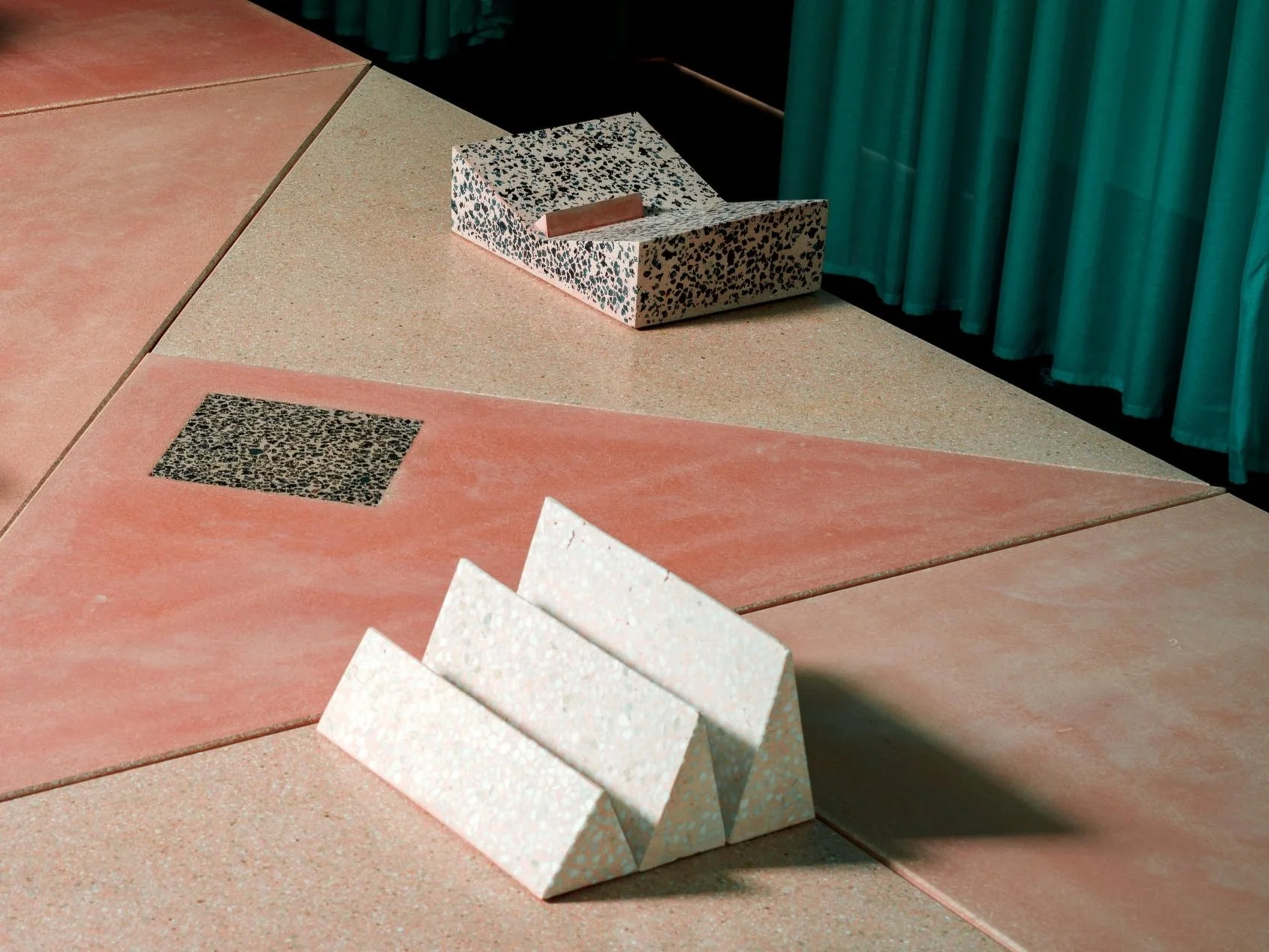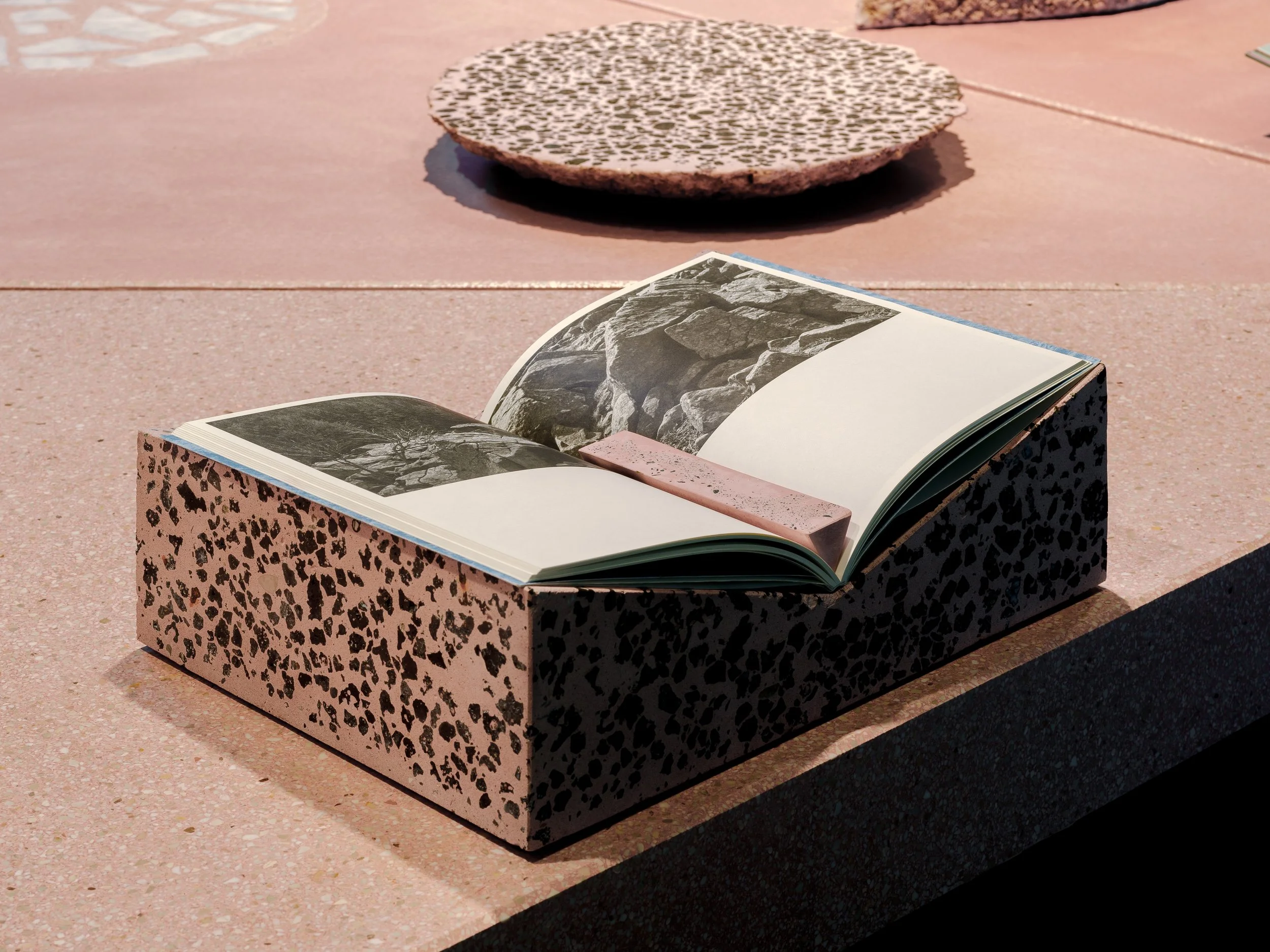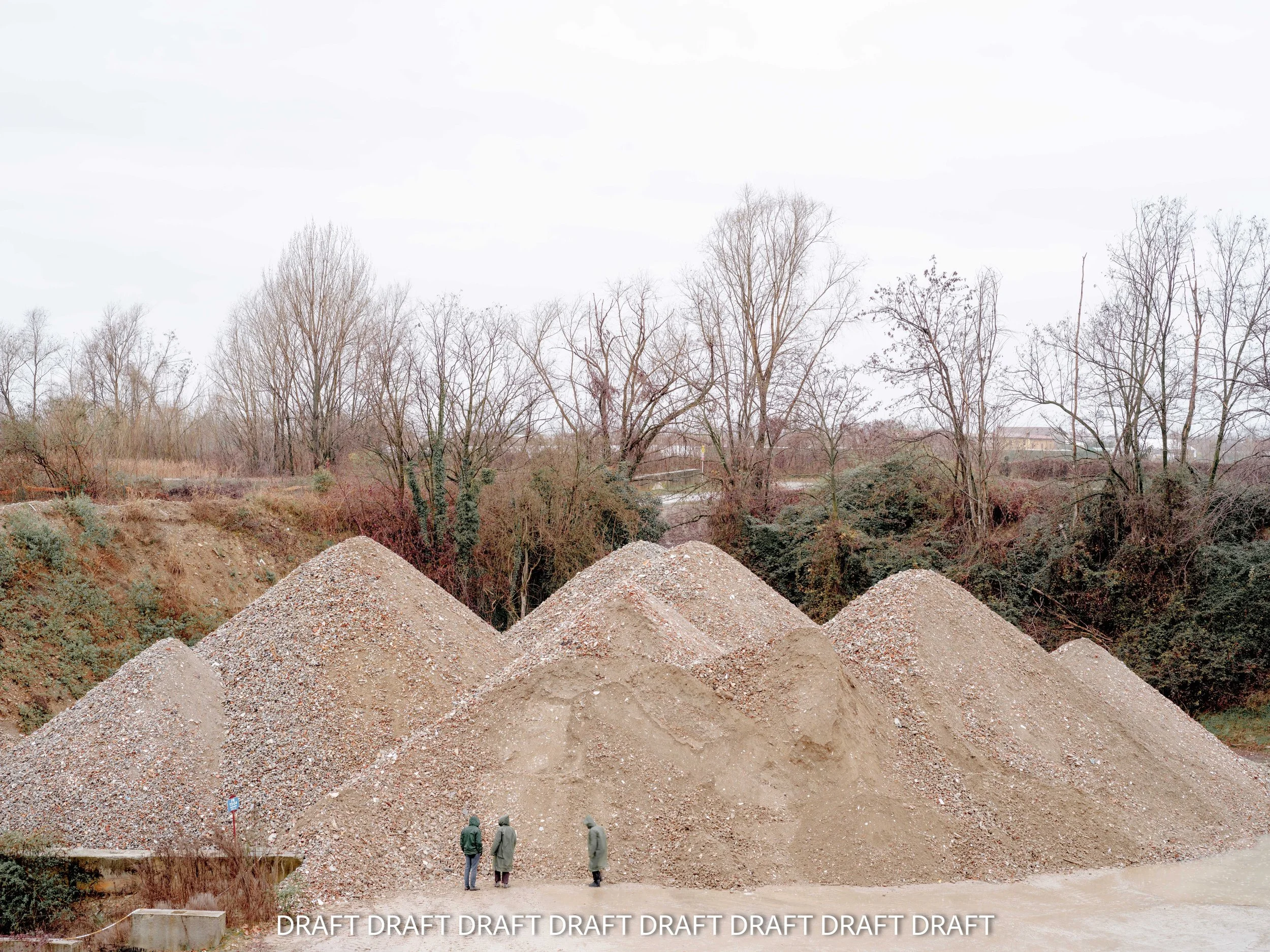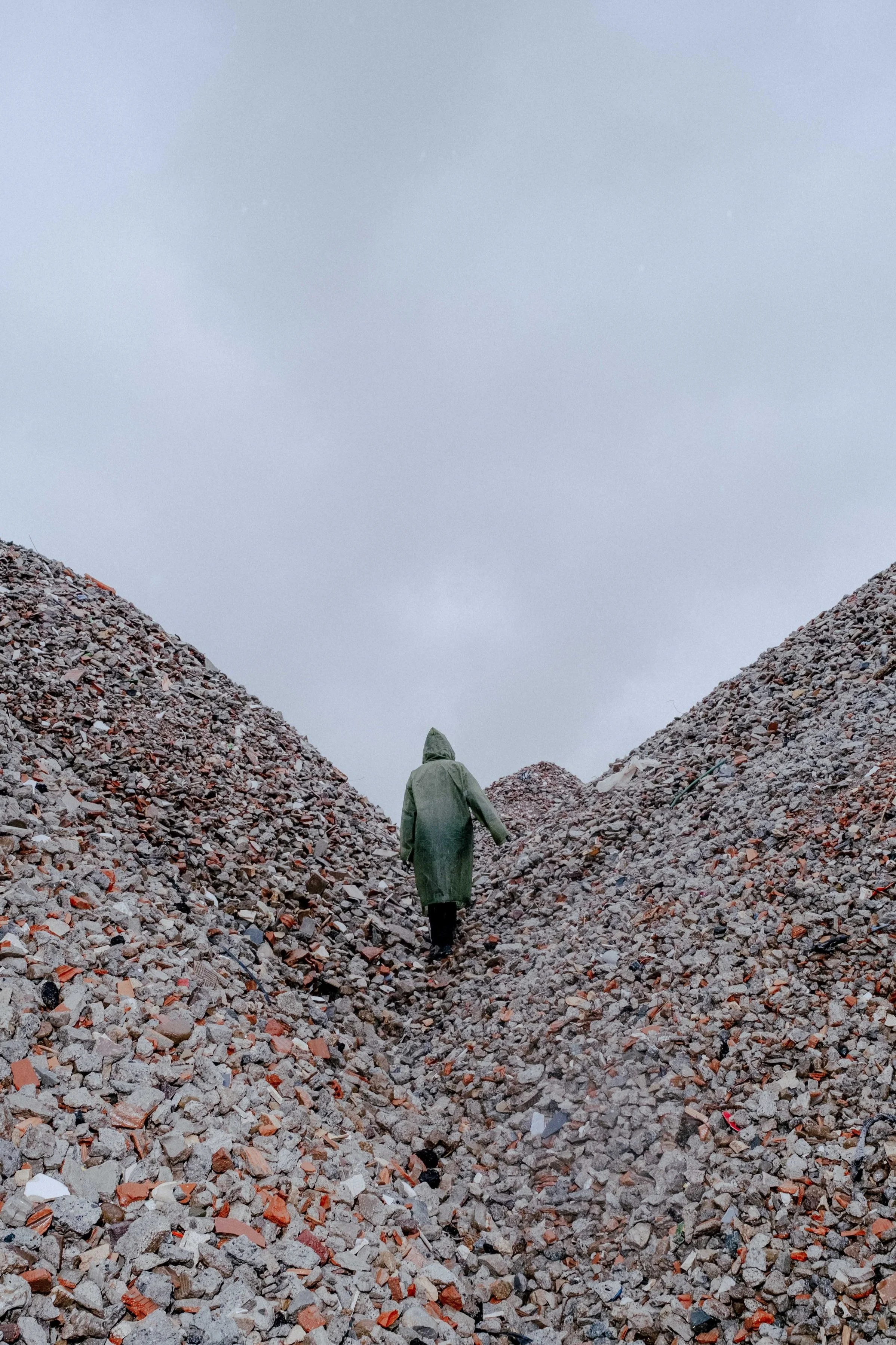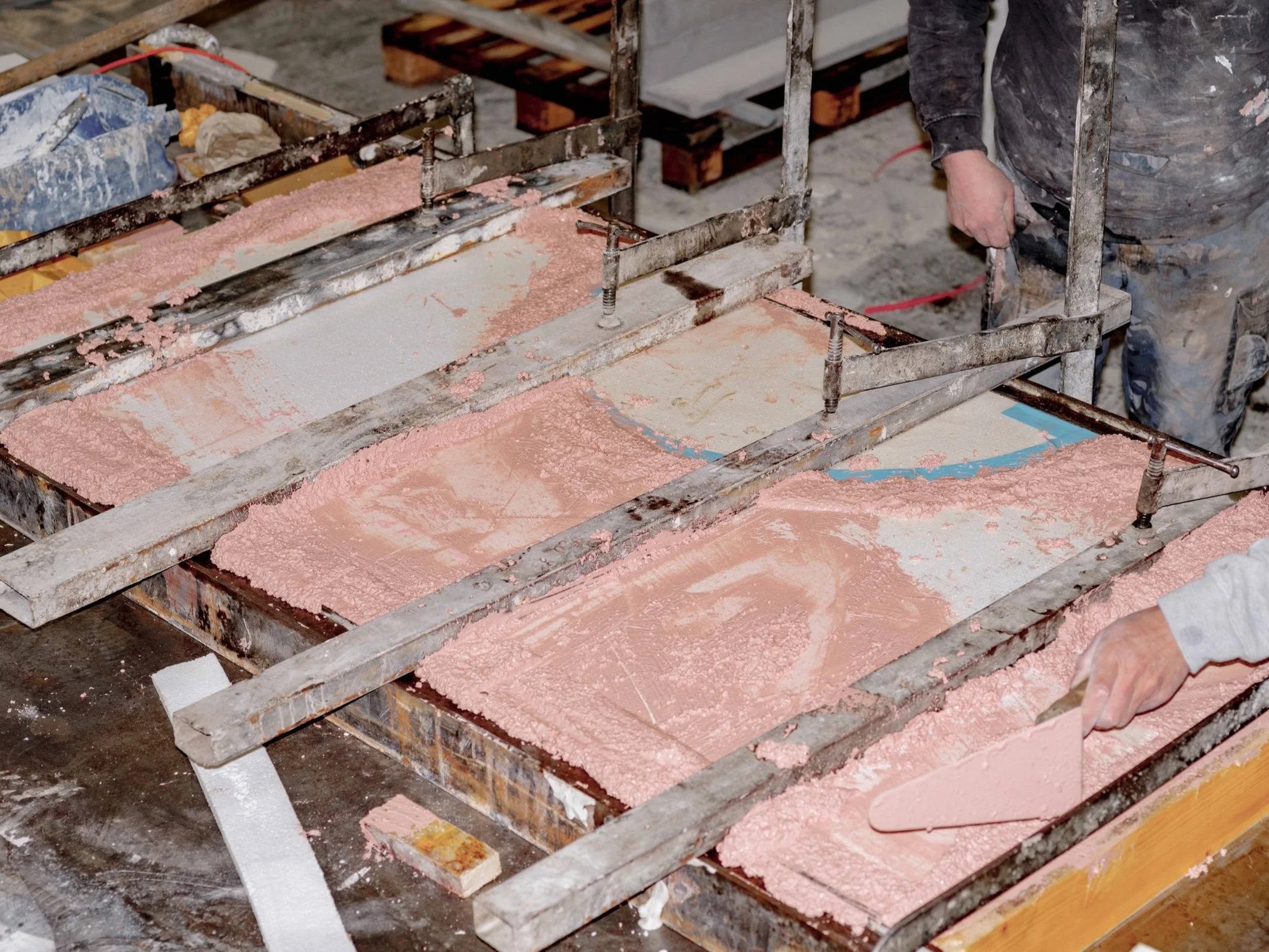Together with GAMeC, we imagined a collection of modular surfaces and volumes that organize a series of activities related to the museum: from the bookshop spaces, and outdoor exhibitions, to editorial meetings of the museum’s magazine and the exhibition of the works of the museum collection. The contemporary "stones" we designed for the museum move like a large-scale Tangram, recombining themselves in ever-changing geometric and geological configurations in the museum spaces.
Massi Erratici takes inspiration both from the tradition of stone and terrazzo working in the Bergamo area, and from the agricultural Roman centuriation of its territory, a subdivision that is still visible, transformed by use over the centuries, often still legible as a principle of organization of landscapes and infrastructures. We imagined these artificial stones - composed of circular concrete and aggregates obtained from the crushing of waste materials - as erratic boulders, which could bring the museum’s public closer to those who work there and to the works on display. The same surfaces on which one works one day, or sits for a few minutes, can be used to display works of art, framing people and objects, plants or books, in the same picture and with the same attention.
The artificial stones were conceived as a fragment of a collection to be expanded, if necessary, over time: GAMeC is preparing to enter its new headquarters, and from this perspective, the project proposes an element of possible continuity. We thought of each object as a nomadic fragment, at ease both in the medieval GAMeC building today and in the rooms of the new headquarters, currently under construction.
